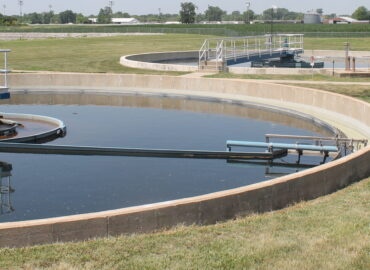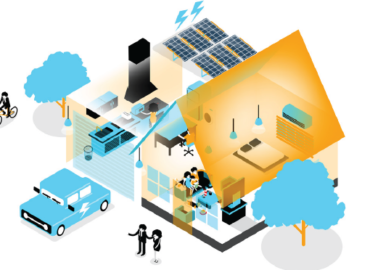Lift stations move wastewater from lower to higher elevation, particularly where the elevation of wastewater sources is not sufficient for gravity flow. Often overlooked during facility upgrades, lift stations are an important component of the treatment system. Lift station operation represents between 10-30% of total wastewater energy consumption for plants and presents great opportunities for energy savings. This publication explores why optimization is important, how to evaluate lift station performance, and recommends strategies to optimize lift stations and reduce energy.
Why Optimization is Important
Lift station optimization improves service life of equipment and reduces staff hours to keep equipment running properly. By increasing lift station operational efficiency, plants will:
• Reduce total dynamic head and power consumption
• Reduce facility operating and utility costs, as well as carbon emissions
• Improve motor service life and reduce service calls
• Reduce labor requirements for already overtaxed staff

According to the Department of Energy’s Office of Industrial Technology, optimization and energy reduction measures can be implemented to achieve significant energy savings. Table 1 highlights common efficiency recommendations and their potential energy savings.
Evaluating Lift Station Performance
To evaluate a lift station for efficiency improvements, an operator will need to gather the following information:
• Pump operating hours
• Pump design criteria (horsepower, flow, and head pressure)
• Using this data, operators can evaluate a lift station based on one of the methods below
Method 1: Monthly Flow vs. Energy Consumption: Plot monthly flow and energy consumption to view kWh/volume (100 gallon most likely) over time. See Figure 1 at right for an example of how to graph this data. Increases in use without a corresponding increase in flows could indicate efficiency loss, clogging, or other issue.
Increases in use without a corresponding increase in flows could indicate efficiency loss, clogging, or other issue.
Method 2: Monitor Pump Run Hours: Operators can monitor pump run hours to identify efficiency opportunities or operational issues. While not as informative as Method 1 above, tracking run hours over time can reveal similar issues. Pump run hours are dependent on flow demand. Short operating cycles may indicate that a pump is oversized for the wet well volume. If run time increases over time or suddenly, this can indicate a seal leak or loss of pump flow.
Method 3: Assessing Hydraulic Performance: Operators can also assess hydraulic performance of a lift station to identify efficiency opportunities. Plot an estimated system curve (solid green line) on the manufacturer’s supplied pump curve (solid red line), as demonstrated in Figure 2 below. Pumps operate most efficiently at their Best Efficiency Point (BEP), labeled the “Primary Design Point” in Figure 2. Most pumps do not maintain this operating condition due to differences in design versus operating conditions. Best practice is to operate pumps within 10% of the BEP. Operation too far from the BEP will suffer efficiency losses, increased vibration, and increased cavitation risk. Pumps with high head requirements can rapidly lose efficiency when slowed by a VFD, limiting the turn-down capability.

The dashed efficiency lines in Figure 2 show that speed should only be reduced to about 85% for this pump. This is due to the VFD losing controllability. A minor change in speed will create a large change in flow rate that can cause issues such as water hammer and pipe damage. This is seen as the system curve flattens out as flow rate is reduced
Energy Optimization Strategies
Resize Pumps
Lift stations often are designed for growing communities, but these future loads rarely fully materialize. If loading does match design, it is usually near the end of the equipment’s useful life. Lift station pumps then operate well below their design point, reducing efficiency and operating life. There are four common indicators for oversized pumps:
1. Excessive flow noise
2. Throttled flow control valves
3. Frequent, short on-cycles lasting only a few minutes during normal flows
4. Frequent replacement of bearings and seals resulting from high backpressure and vibration
To address this problem, you can purchase a new, smaller unit, but this is often more expensive than other corrective measures. It also does not allow for optimization of the pump for fluctuating conditions of flow and wet well fill level.
Impeller Trimming
Most pumps can be assembled using more than one impeller diameter. Trimming the impeller is low-cost upgrade for pumps with a constant flow rate and excessive throttling. The trimming procedure is easy to implement and can generate savings up to 8%. Figure 3 shows how reducing impeller diameter delivers the desired flow rate at lower head. This reduces the amount of energy imparted to the fluid, saving energy. Throttling valves can be thus be opened. However, trimming the impeller decreases pump efficiency as more water can pass between the impeller and pump wall. Trimming the impeller below about 70% of original size can increase energy consumption per unit of flow.
Variable Speed Drives (VFDs)
Pumps that experience large changes in flow can benefit from VFDs. These are particularly beneficial for plants with I&I flows. VFDs can soft start motors, adjust speed to match flow, reduce motor wear, and smooth out pressure fluctuations in sewer piping. Some VFDs allow the pump to run briefly in reverse before starting to break up clogs. This can dramatically reduce maintenance labor hours. VFDs may not be cost effective if pump run hours are less than 2,000 hours per year, have lower horsepower ratings (below 5 HP), or have high static head requirements.
Supervisory Control and Data Acquisition (SCADA) Systems
SCADA systems gather data from local monitoring instruments and transfer data to a central monitoring station. SCADA systems can provide remote alarms and control to operators. These early alerts and ability to adjust operation remotely can also cut down on maintenance labor hours.
Considerations
Depending on the lift station equipment, not all improvement strategies are feasible. For instance, impeller trimming is only appropriate for lift station pumps with minimal flow variation, high initial efficiency, and having throttled discharge valves. Similarly, a VFD may not be feasible for lift stations with high static head requirements that limit turn-down capability. Therefore, we recommend having an expert quantify your lift station’s pumping process requirements and then evaluate the improvement strategies that best fit your needs.





